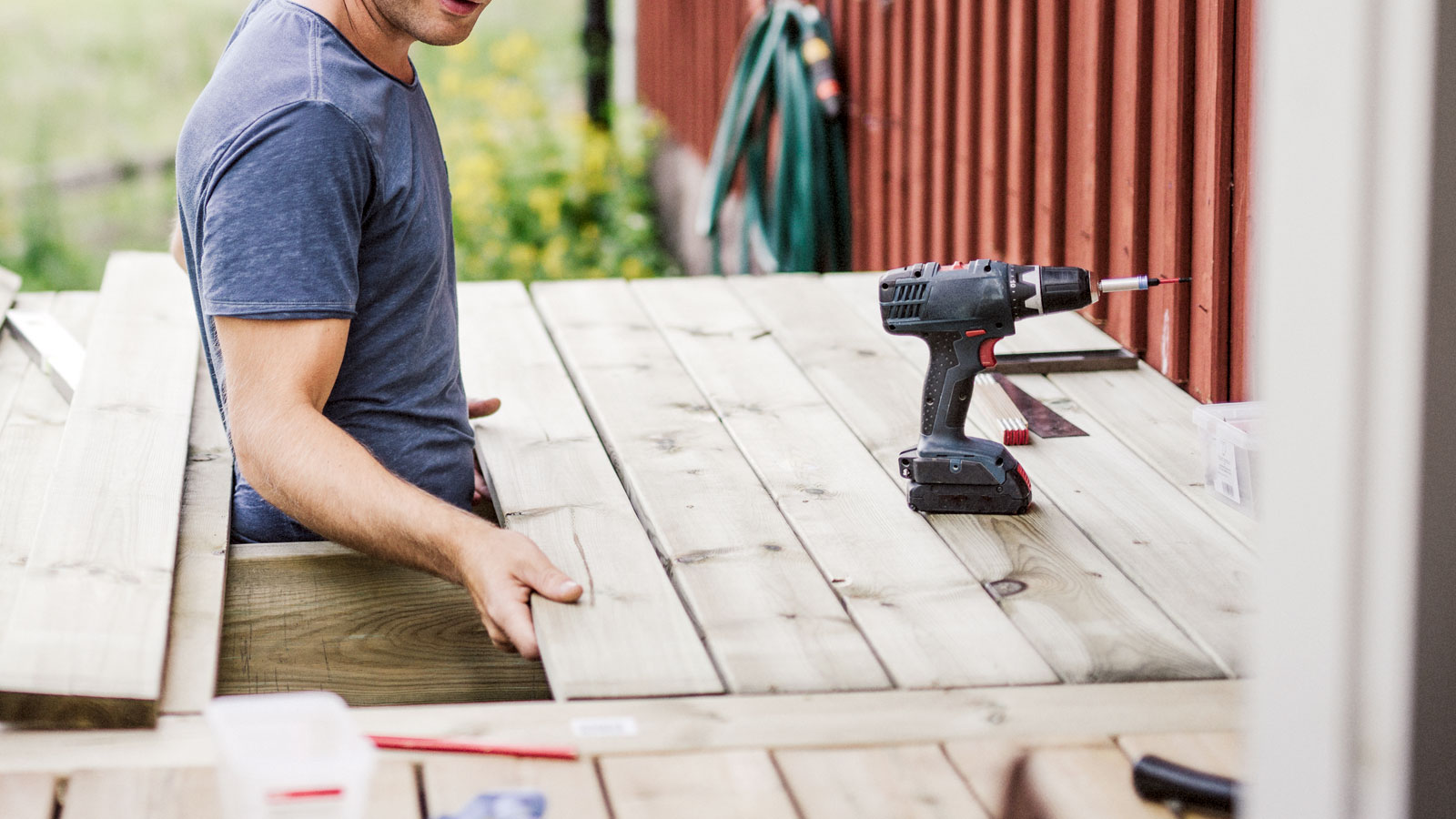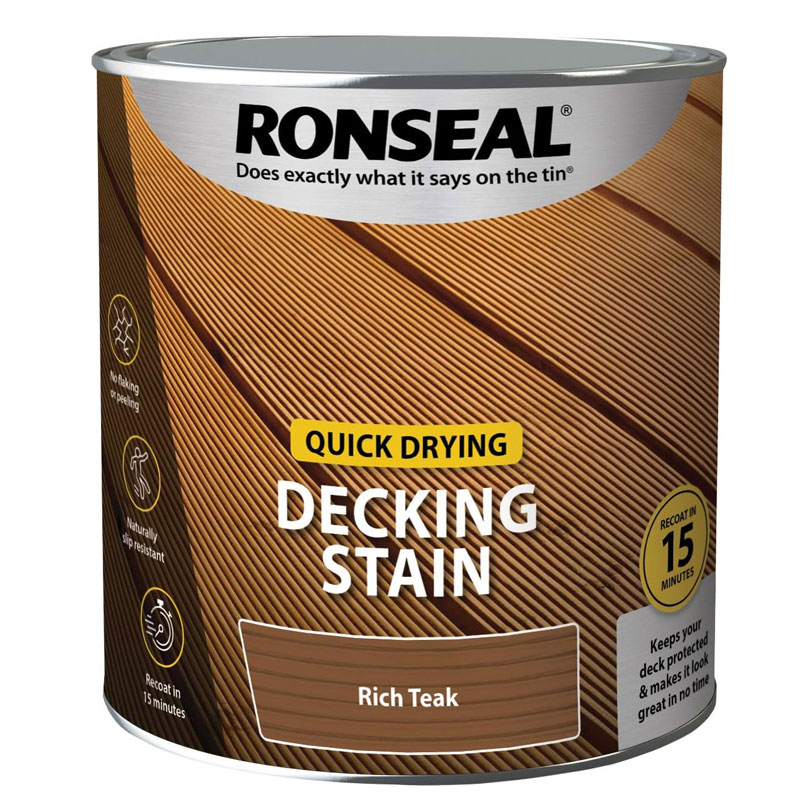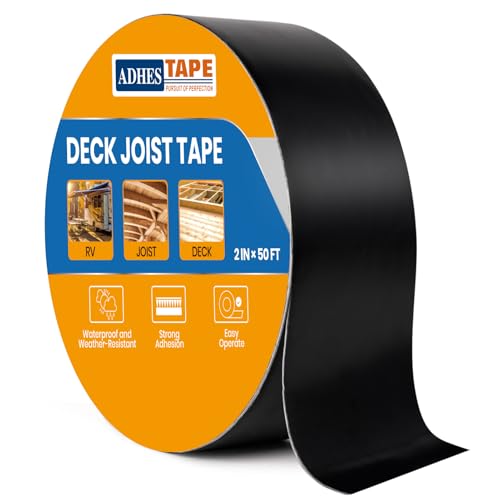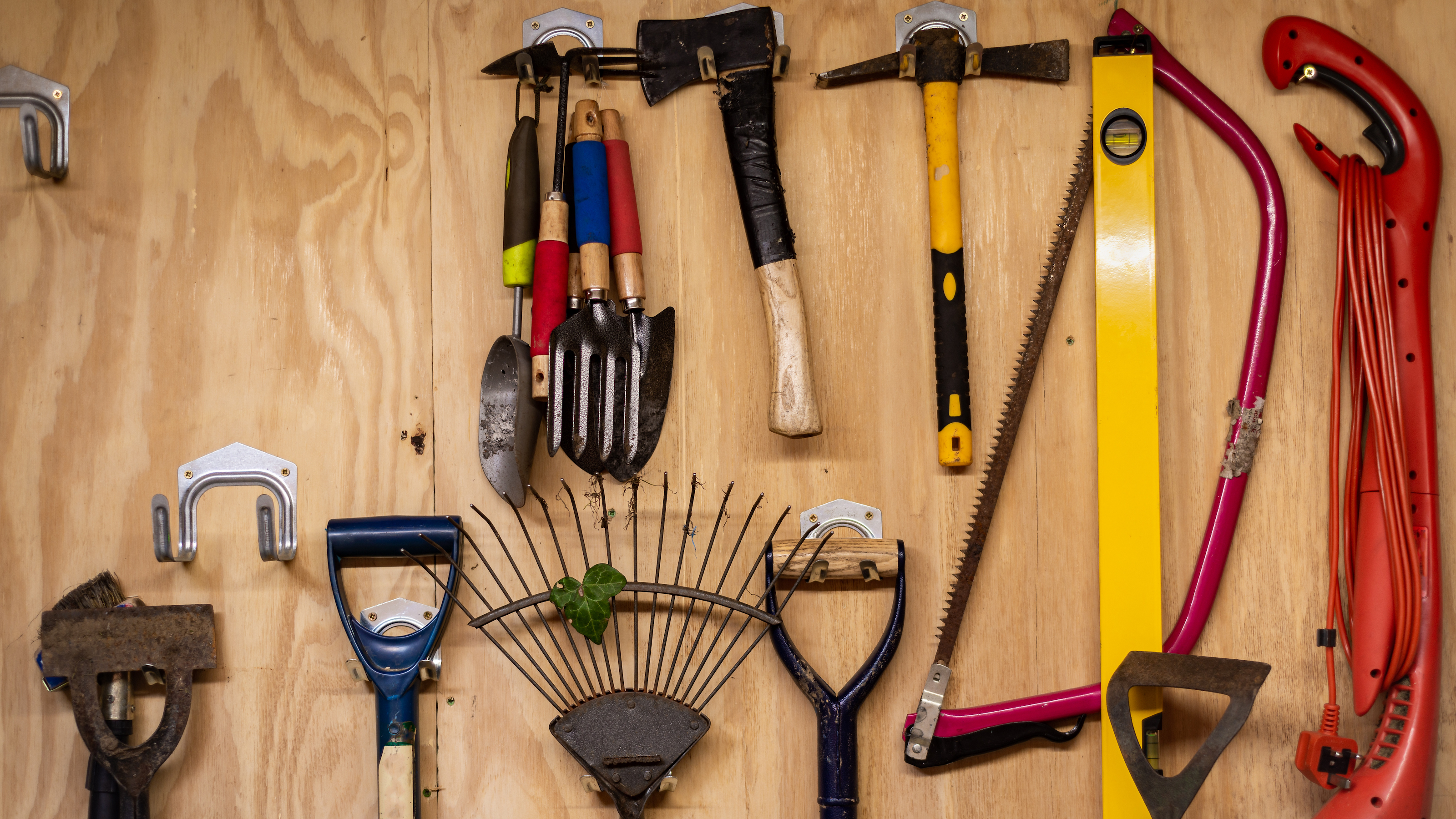Want to know how to repair decking to keep it looking good? Experts share their tips
Learn how to repair decking and say goodbye to rotting timbers and cracked and scratched composite

Decking has to withstand the relentless onslaught of the weather and daily footfall. So, it's inevitable that it will need some love and attention during its lifetime, and knowing how to repair decking is essential to its longevity.
If your garden decking ideas are made from timber, they will be susceptible to moisture, and if exposed for too long, the timber will start to rot. Composite decking is hardier, but it's prone to scratching and even cracking. But before you start thinking of replacing your decking, find out what you can do to keep your current decking in good working order.

Leigh has 20+ years of experience in the timber/ construction industry. Since joining Jacksons Fencing in 2019, he has been instrumental in leading the retail team, focusing on driving the timber division side of the business.
Best way to fix rotting wooden boards
Timber decking is prone to rotting, especially if it is not maintained. Leigh Barnes, Retail Sales Manager at Jacksons Fencing, says, “The first step is to evaluate the extent of the damage and identify the source.” He adds, “Foundation and water drainage are key areas to consider, which, if not addressed, can cause premature rotting.”
If the problem is confined to a single board, Barnes says, “If the supporting structure hasn’t been affected, replacing the damaged board is typically the best option.”
But if the problem has gone beyond the decking board, it might be a big job to sort, as Barnes explains, “If the rot is more significant and affecting the structure of the deck itself, it may be worth replacing the whole deck.”
He adds, “Removing parts affected by rot and applying treatment may not prevent further rot. Treatment needs to penetrate deep into the centre of the wood to offer the best protection.”
A long-term solution is to invest in quality wood as Barnes explains, "How timber is treated for its intended use will determine how well and long it lasts. Cheap wooden decking with a short or no guarantee will likely only last 2-5 years before it needs replacing."
He adds, "Choose wooden decking with a long-term guarantee, as this reflects the manufacturer's confidence in its durability."
Try these to help repair decking and keep it looking good

Decking stain that will help protect wooden decking and keep it looking fresh and new. Available in various colours including Rich Teak and Rocky Grey.
How to repair composite decking
Composite decking doesn’t rot like timber decking, but it can still be damaged and need repairing. A typical issue with composite decking is scratching on the surface of the planks. For minor scratches you can use a basic repair kit like this DAIXISM Furniture Repair Kit from Amazon.
These are like felt tips that match up with the colour of your deck and help blend in the scratches. But these are only a temporary solution. You will need to apply regularly, especially in the winter months or when the decking has heavy footfall. An alternative is wax sticks like these Briwax Filler Sticks from Amazon. But again they will need to be used regularly.
An option for deeper scratches is to sand around the area that needs repairing with fine sandpaper and mix it with clear silicone caulk to create a coloured paste. Then, fill the gap with a putty knife, like this Pro Grade Level 5 Stainless Steel Putty Knife from Amazon.
This is a longer-term solution, but the easy option is to get a new composite board and replace the old one.
Best way to refresh an old deck
Decking has to contend with all weathers, and while it may look like it needs repairing, it might just need a refresh. It's wise to refresh your deck regularly, as it can mean less decking maintenance.
Barnes gives a quick overview of what you should do to keep your deck looking its best. “The first step is to clean it thoroughly. Clean the deck to remove dirt, debris, and moss. You can use a pressure washer or a stiff brush to clean the surface.”
When cleaning a deck Branes suggests, “Always follow the grain of the timber when scrubbing to reduce marks.” He adds, “Good quality decking with a long lifetime guarantee should not require re-treating or re-staining. But if your decking requires it, choose a top-quality timber treatment (like this Ronseal Ultimate Decking Oil from Amazon) and apply it according to instructions.”
FAQs

Simon is a decking, patio and paving expert for Armstrong Cheshire. He is passionate about helping homeowners and professionals create their dream outdoor spaces affordably.
Can I use a wood filler on deck boards?
The answer may seem obvious, but using a wood filler on a timber deck may not be the best solution, as Simon Wardle, decking expert at Armstrong Cheshire, explains: "While exterior wood filler might seem like an easy fix, it’s not always the best long-term solution. Most fillers don’t flex with the natural expansion and contraction of wood, so they can crack and break down over time, especially in high-traffic areas.
However, it can be used for minor repairs as Wardle shares, “If the damage is minor, a quality exterior filler (like this Toupret Wood Repair Filler from Amazon) might work as a temporary fix, but for anything more serious, replacing the board is usually the better option."
Where does joist tape need to be used?
As you might expect, joist tape is designed for joists. Here Wardle shares what it does, “Joist tape should go on top of the joists, beams, and ledger boards - anywhere the decking boards make direct contact.” He adds, “It helps to create a moisture barrier, preventing water from seeping into the wood and potentially causing rot.”
Some people worry that it can trap moisture causing timber to rot. But Wardle says this is not the case, “If installed correctly, it actually sheds water away rather than holding it in.” He adds, “The key is applying it smoothly, without air bubbles or gaps where water could seep in."
Why could my decking boards be rotting so fast?
If you notice that your timber decking boards are rotting much quicker than expected, there is probably an unseen reason as Wardle shares, “Excess moisture is likely the culprit.” He adds, “Water pooling on the surface, trapped moisture under furniture, or poor drainage can all lead to accelerated rot. Another big factor is airflow. If there’s not enough ventilation underneath the deck, moisture can get trapped and lead to decay."
But it's not just these reasons that can cause issues, continues Wardle. "The type of wood also plays a huge role.” He adds, “Softwoods like untreated pine won’t last as long as hardwoods or pressure-treated timber.” These are typically the best woods for decking.
Poor installation can also cause problems, as Wardle shares, “The ways your decking has been installed also has an impact.” He adds, “Boards placed too close together can trap water, and if the cut ends haven’t been sealed properly, water can seep in and speed up the rotting process."
Repairing a deck is one way to prolong its longevity, but it might just be time to replace it with a new one. Check out our small decking ideas and composite decking ideas for inspiration and how much you need to budget for decking costs.
Get the Homebuilding & Renovating Newsletter
Bring your dream home to life with expert advice, how to guides and design inspiration. Sign up for our newsletter and get two free tickets to a Homebuilding & Renovating Show near you.
Steve Jenkins is a freelance content creator with over two decades of experience working in digital and print and was previously the DIY content editor for Homebuilding & Renovating.
He is a keen DIYer with over 20 years of experience in transforming and renovating the many homes he has lived in. He specialises in painting and decorating, but has a wide range of skills gleaned from working in the building trade for around 10 years and spending time at night school learning how to plaster and plumb.
He has fitted kitchens, tiled bathrooms and kitchens, laid many floors, built partition walls, plastered walls, plumbed in bathrooms, worked on loft conversions and much more. And when he's not sure how to tackle a DIY project he has a wide network of friends – including plumbers, gas engineers, tilers, carpenters, painters and decorators, electricians and builders – in the trade to call upon.



